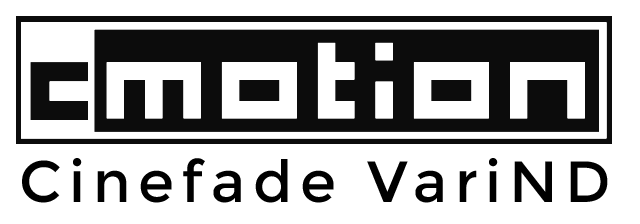Porsche automotive shoot with the Cinefade RotaPola
Polarisers are essential on any automotive shoot, allowing the Director of Photography to control reflections on the bodywork and windshield of the ‘hero car’. Automotive productions often use a crane, Russian Arm, TechnoDolly or car rig to stabilise and move the camera, making the camera and its accessories inaccessible to the crew. Wireless control is therefore essential and the Cinefade Motorised Polariser enables filmmakers to remotely control a polariser via the cmotion cPro lens control system.
Porsche Next Digital Show
Any cinematographer will agree that the trickiest and most time-consuming part of an automotive shoot is not lighting the car but controlling its reflections. One of Porsche’s most recent projects in Belgium is a ‘Digital Show’, no doubt put on out of necessity due to the coronavirus pandemic, allowing customers to explore the cars online from every angle.
For the shoot, director and DP Björn Tagemose knew that he would be flying the camera around the cars with a TechnoDolly for 95% of the seven-day shoot; panning, tilting and dollying all over the place. The task of finding the best way to remotely control a polariser fell to camera assistant Nathan Lederman, who had experience in mounting external motors to polar trays, such as the Tiffen Rotating Multi Polar Tray or the Arri Rota Pola Filter Frame. However, he found these solutions cumbersome and therefore grasped the opportunity to test out the Cinefade Motorised Polariser from The Movie Lot in Belgium.
Compared to other options on the market, the Cinefade Motorised Polariser is the only professional solution with an in-built motor, allowing the polariser to interface directly with a cmotion cPro wireless lens control system. Simply insert the filter into the 4x5 matte box, daisy-chain the Motorised Polariser via LBUS to the lens motors or directly to the cPro camin, select RotaPola mode on the cPro hand unit and you are able to control 180 degrees of polarisation angle via one of the four available axes (knob, slider, thumbwheel or joystick). No calibration, assembly or DIY mounting necessary - just plug-and-play!
“I used the Cinefade RotaPola to make reflections less disturbing, not to let them draw attention and to keep the car looking its best.”
- AC Nathan Lederman
The hand unit provides an exact readout of the current filter position in degrees so Nathan could set beginning and end positions of the polariser for each camera move and dynamically adjust the polarisation angle between the two positions.
“I controlled the filter during the rehearsal and afterwards asked the DP what he thought of the reflections. If he didn’t notice anything weird or strange, he wouldn’t vary the polarisation angle but sometimes we went through the TechnoDolly move to see where we would have a small pull. For example, when going from the windshield, over to the side of the car and then down to the wheels, I would set two positions and operate the RotaPola to match the movement.”
- AC Nathan Lederman
Watch Porsche Next Digital Show
The Digital Show is available for a limited time at www.porschenext.be and we recorded a snippet for you below in case you missed it.
PorscheNext created and produced by ShootTheAritst for DDMC and Porsche Belgium
Director and DP: Björn Tagemose - AC: Nathan Lederman - RED Monstro - Cooke S7i 25mm T2 lens
“What was most impressive is that I was able to use the Cinefade RotaPola in motion. Just like focus pulling it becomes an organic thing that actually changes the reflections in cars. It’s not just an effect, it adds a certain personality to the shot. Like an extra layer on top of focus, depth of field or motion. That makes it really cool. I’m impressed and I’ll definitely use it again.”
- DP Björn Tagemose
The results speak for themselves but this is certainly not the only way a remotely controlled polariser can be used on automotive shoots. Let us know in the comments how you would use the Cinefade RotaPola on your shoot and in the meantime check out DP Csaper Leaver’s work for Bentley here in which he animated the reflections on the bodywork of the Bentley Mulsanne W.O. Edition for a unique effect.
Combine the Cinefade Motorised Polariser with the Cinefade Static Polariser to use VariND mode and remotely control exposure during interior-to-exterior Steadicam shots or simply to replace traditional ND filters and save time on set. Finally, the Cinefade system can also synchronise an iris motor with the variable ND filter to enable a novel variable depth-of-field effect. Check out this storytelling tool here.
The Cinefade system, including VariND filters, cPro LCS with motors and all cables and accessories is available for purchase and hire worldwide directly from the inventor Oliver Janesh Christiansen.








